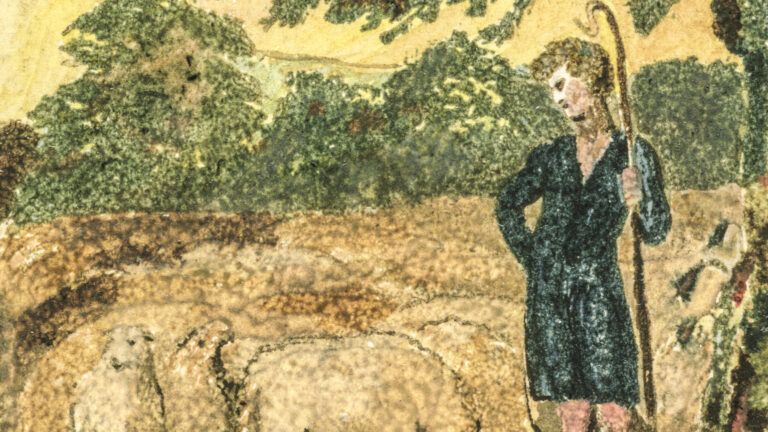I’m not an impulsive person. But three months after my husband, Lew, and I got married, I was struck by the strangest urge: to learn sign language. I couldn’t understand it.
We lived in Mammoth Lakes, California, a ski village in the Sierra Nevadas where we planned to raise a family. We didn’t know any deaf people. I ran a hair salon. Lew installed carpet. This was before the first deaf Miss America and movies like Children of a Lesser God made deafness and deaf culture more widely known.
I kept the urge to myself. It seemed so off the wall. Yet the harder I tried to push the idea out of my mind, the harder it pushed back. Finally I went to a bookstore.
“We don’t carry any books on that subject,” the clerk said, “but we could order one.” In a catalogue, I spotted The Joy of Signing, a book about American Sign Language. It sounded…happy. What could be joyous about living in a soundless world? Imagine never hearing music. Laughter. Or a warning, like a car horn or a fire alarm. How could someone learn to live like that? “I’ll take that one,” I said.
READ MORE: NANETTE FABRAY ON GROWING WITH GOD
The book arrived and I practiced signing in front of the bedroom mirror. More challenging than I thought. And confusing. My movements were awkward and slow. Lew came in and gawked at me. “What are you doing?” he asked.
“Practicing sign language,” I said.
“Why?”
Without even thinking, I blurted, “Because I feel like we’re going to have a deaf child!”
Lew and I stared at each other. Where did that come from? Never once had we talked about the possibility. I was way too young and inexperienced to handle a deaf child. What did I know about the challenges one would face, and what to do? How could I make the right decisions to help him or her live a normal life? No, God wouldn’t put that responsibility on us. This had to be newlywed jitters.
Apparently Lew felt that way too. “Well, okay then,” he muttered, giving me a bemused look.
We didn’t talk about it again. The strange urge to learn sign language? It faded almost as quickly as it had arrived. Two years later, I gave birth to our first child, Crystal, two months premature. She stayed in the hospital for 10 days—and came home completely healthy. Life became a blur of motherhood and work. The Joy of Signing was packed in a box and tucked away in a spare room.
Alaina, our second child, was born 18 months after Crystal. Right on time, no complications. She was lovely, with sky-blue eyes and a mellow, happy disposition, always smiling. I leaned into her crib and smiled back. She laughed. I laughed back. Alaina giggled so hard, her cheeks puffed and her eyes watered.
I took Crystal and Alaina with me everywhere, even to work. Alaina lay in her portable car seat, fascinated by the scissors snip-snipping customers’ hair, all the while babbling in her sweet voice. Everyone was impressed by how well behaved she was. She never cried, even with the loudest blow-dryer blasting away.
One afternoon I left Alaina in the bedroom while I ran downstairs to grab a load of laundry. I huffed back upstairs with the laundry basket and found Lew standing behind Alaina, talking to her. He’d just come home from work. He looked worried.
“I think we need to get Alaina’s ears checked,” he said.
I clutched the laundry basket. “Why?”
READ MORE: TUNE YOUR EAR TO GOD’S WORD
I didn’t need to ask. I knew. Alaina’s calmness was uncanny. Nothing startled her. At five months, she’d reached all the milestones that Crystal had. But a feeling had been building inside me, one I hadn’t wanted to admit.
Lew pulled a jigsaw-puzzle box down from a shelf. He stepped back and let the box fall to the floor. Thwack! Alaina didn’t flinch. I took Lew’s hand. We walked in front of Alaina. She looked up, surprised to see us. Surprised.
There were no resources for deaf children in Mammoth Lakes. Not even a full-service hospital. We took Alaina to a pediatrician, who referred us to a hearing institute in Los Angeles. The doctor there confirmed what we already knew in our hearts. Alaina had bilateral, prelingual, profound hearing loss. Completely deaf from birth. She’d never heard a single sound.
“Your most urgent job is to teach Alaina language,” the doctor said. “It’s crucial for her mental development. I assume neither of you knows sign language?”
I shook my head miserably, thinking of that book I’d stowed in the spare room.
“There are many ways for deaf children to learn language,” the doctor said. “I can’t recommend a particular one, because each family needs to decide which approach works best for them.”
Lew and I researched our options. There was oral language only, basically lip reading. American Sign Language (ASL), the predominant form of nonverbal communication in the United States. And Signing Exact English, or SEE, which used signs similar to ASL’s but more closely replicated English grammar and syntax. We had to start teaching Alaina soon, or she would struggle to adapt.
I dug out The Joy of Signing. I hadn’t even been aware that there was more than one sign language when I’d bought it. ASL was popular, and I’d gotten a bit of a head start, but more and more schools were teaching SEE. Would that be best for Alaina? I felt totally inadequate to make such a decision. I couldn’t help thinking I should have noticed Alaina’s deafness sooner. Hadn’t God tried to warn me? God, you gave me a sign once, I prayed. Send me another.
Lew and I agreed that SEE seemed to make the most sense. It would help Alaina sign out sentences in the same manner that she would later learn to read and write. Once she’d mastered the signs, she could pick up ASL as well. I brought home a new book, called Signing Exact English, hoping we’d made the right decision.
One morning, at home with the girls, I was struck by another irresistible desire—for a spinach-and-mushroom omelet at the Swiss Cafe, our favorite breakfast place. While we waited for a table, I noticed a woman admiring the girls. “Your daughters are adorable,” she said.
I thanked her, but was relieved when the hostess seated us at a rear booth. I felt self-conscious signing to Alaina in public.
The food arrived and I signed to Alaina, “Mommy’s eating.”
A loud whisper came from the next booth. “She’s signing!”
I froze.
A woman peered around the booth. The lady from the waiting area, sitting with her husband and another couple. She smiled warmly. “Excuse me,” she said. “I couldn’t help noticing. Do you mind me asking how you’re raising your deaf child?”
I said the first thing that came into my head. “We’re teaching her how to sign out of a book you’ve probably never heard of. It’s called Signing Exact English.”
The woman’s smile broadened. “My name’s Esther Zawolkow,” she said. “I’m coauthor of that book.”
The whole restaurant seemed to quiet. I struggled to speak. “Can you—can you teach me how to sign ‘I love you’?” I asked.
Esther showed me the signs. I formed the words for my daughter. Alaina just giggled.
I wasn’t sure if she could understand me yet. As for me, I was beginning to understand everything.
Did you enjoy this story? Subscribe to Mysterious Ways magazine.





